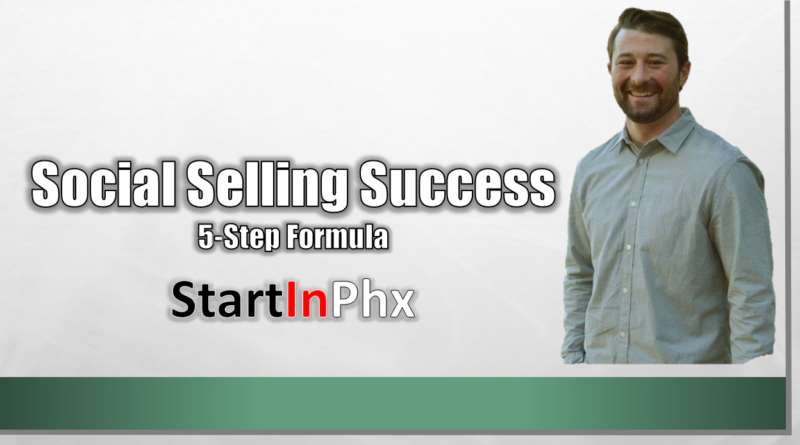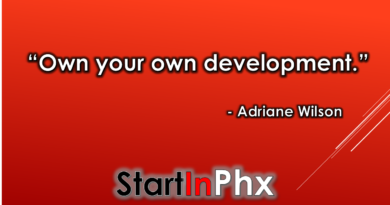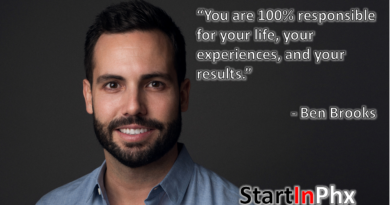5 Step Formula for Social Selling Success
Social Selling Success
We often think of social selling as sales interactions conducted via social media. That certainly can be the case, but social selling done right is much more old-school than you might realize.
(Pssst… What works online, works in-person too!)
Whether you’re prospecting for new customers on social media or at your next networking event the key to successfully engaging people in sales conversations is virtually the same: Just be social.
With all kinds of consultants, coaches, and thought leaders telling businesses they can find customers using social media, we also find swarms of people spamming the heck out of their online communities and then scratching their head when no one buys.
5 Step Formula for Social Selling Success
Add Value & Create Wins
Exchange in Dialog
Get Permission to Sell
Enter Discovery Phase
Tap into Your Prospect’s Network
How Social Selling Really Works
If you’re skimming through social media and see that someone is challenged by something your offer can overcome, you have an obligation to make your offering known. At the same time however, you have to respect the laws of sales psychology.
A simple post to say, ‘Oh hey, I can sell you something for this,’ is certainly going to hit resistance. We’re all trained to reject sales messages that fit this pattern.
If someone pitched you this same way after overhearing you talking with a friend on the street, you wouldn’t even stop to think about what was just offered. You’d just say you weren’t interested. That’s because we’ve all developed a default rejection to fall back on when we’re hit with messages that fit our mental model of what a sales pitch looks and sounds like.
If instead you disrupt the mental model your prospect has for what a sales message looks like, you’ll have more success in actually connecting with them.
A simple way to interrupt the ‘this is a sales message’ pattern would be to offer a solution or share a way someone else – ideally a past customer of yours – had overcome that same challenge.
By practicing this kind of pattern interruption in your prospecting you are more likely to engage prospects in real conversations and be given permission to selling as a result.
Turning Challenges into Conversations by Adding Value
Say you find someone who has posted on Facebook, Twitter, LinkedIn, Quora, etc. about their frustration in trying to fill a key role at their company and you happen to be a corporate recruiter.
What if instead of responding with, “Well, I’m a corporate recruiter. I can help you with that!” you asked a few questions to dial in on what the role is and why it’s been so hard to fill?
After asking these questions you might be able to offer an anecdote of how one of your clients overcame a similar challenge and exactly how they did it. Sharing a narrative always gets someone’s attention, and it helps to establish you as a source of potential solutions to future challenges in this area.
If the success of the story you share can be replicated by your prospect it could give them a quick win that brings them closer to knowing, liking, and trusting you. Through your explanation they may even come to understand the complexity of their staffing problem and inquire about what it might look like if you – someone with more recruiting experience – were to take over the project.
That’s what permission to sell looks like!
If you don’t get to the point of your prospects asking you, “What would it cost for you to do that for me?” all is not lost. You can still get permission to sell to them. You’ll just have to ask for it.
Give Them The Goods Up Front
In the age of the internet there are no secrets.
Being able to articulate each step in route to the success your prospect is hoping to achieve is the minimum requirement for getting their permission to sell. It is not your proprietary process to keep a secret.
Again, there are no secrets on the internet. If you’re not willing to share the steps to success, your prospect will find someone else who is. That prospect is also more likely to buy from that someone else because of the rapport they built during that conversation.
If the value-add of your offer is simply the steps to success that can be found for free elsewhere, you might have a hard time finding customers. If instead your value-add is a nuanced understanding of the problem and an ability to get your prospect from point A to B with less difficulty and in less time, you’ll be in a much better position to win their permission to sell.
You have to give your prospects something they can use. Almost as if you’re suggesting they could win the war without your help.
The artful way to do this however, would also demonstrate that it would be much more efficient if they were to hire you.
In anything you sell, you can identify your hottest prospects by finding out if they have already tried to overcome the problem you fix. You could say these folks are in the fast lane to a buying decision. It’s even better if they show a pattern of having thrown money at the problem, but have yet to achieve the results they’re after.
By giving away a portion of your secret sauce you demonstrate you know your stuff, but also give cold prospects something they can use to get their first quick win.
Your cold prospects aren’t typically in the fast lane. They may not even be in the slow lane. They might be walking slowly down the sidewalk toward a buying decision. They have a lot to learn before logical marketing and sales messages can successfully persuade them to buy.
By giving your sidewalk and slow lane prospects a quick win – helping them win a battle or two but not so much help they have won the war they’ll start to know, like, and trust you because you helped.
These small wins also help to demonstrate to sidewalk and slow lane prospects that paying for your product or service is worth the cost.
Exchange in Dialog
Dialog is probably the most forgotten tool in social selling, but the one with the greatest value.
When you go back and forth with someone, answering their questions, asking clarifying questions, and demonstrating your mastery of the subject matter at hand you gain the opportunity to qualify a prospect as a lead.
By qualifying a prospect, establishing that they are a legitimate potential customer, that they have a need you can fulfill, and likely have the resources to pay you, you determine that they are worth your pursuit in an attempt to convert them into a customer.
Exchanging in dialog is a great way to initiate sales conversations in-person or on social media. When your dialog with prospects takes place on a public platform like social media however, it’s not just one-to-one messaging that takes place. These conversations double as a broadcast of human interaction. They have the power to spark interest among other potential buyers. This is why social selling done well can serve as both efficient and captivating marketing.
In order to pull this off you need to pace your social selling processes appropriately. Like pursing a romantic partner, you’ll want to be clear with your intentions, but by coming on too strong too soon you can kill your chance of success before you really get started.
As a rule of thumb, wait a day or two after qualifying a prospect as a marketing-qualified lead (i.e. they have a need that you can potentially meet, but that fact has yet to be confirmed) before asking permission to sell to them. If they give permission without your having to ask however, feel free set a date for a discovery session, but don’t jump ahead and start your discovery phase in a public place or on social media.
Allow your discovery sessions to be their own events. Doing so gives you an opportunity to prepare for a discovery conversation and conduct it in as setting with less things to distract your prospect. Planned discovery sessions in controlled setting always turn out better.
Permission to Sell
Getting permission to sell is crucial to converting prospects into customers. Without their permission to sell, you could pitch someone until you’re blue in the face but they won’t hear a word of it. Without your prospect’s permission to sell they may also be able to avoid you all together as you try to move them down your sales path.
For example, if you were to try selling to someone after positioning your meeting as a networking meet-up over coffee, a prospect who might otherwise be very eager to buy could be turned off by the misdirection. That’s not a good thing when you’re trying to sell.
After you’ve identified a prospect as a marketing-qualified lead, your next step should be to schedule a discovery session. This can take place by phone, video chat, or in-person. The goal of this session is to determine if they are a sales-qualified lead that can truly benefit and pay for you offer.
If your prospect ever asks you, “What would it cost for you to do that for me?” they are giving you permission to sell to them before you’ve even asked. That’s awesome! If this happens, stop whatever you’re doing and schedule a discovery session.
Again, unless you’re already in a controlled setting – not a crowded room, public place, or on social media – you’ll want to make your discovery sessions their own event, scheduled a day or more into the future. In some situations you’ll also want to do some homework on your prospect before jumping into a discovery conversation, which makes scheduling-forward for these kinds of meetings even more important.
All you have to say is that you have a few more questions before you quote them a price, or before you can suggest a specific product, and that those questions are better asked and answered after you’ve had a chance to do some homework or when you’re in front of your office computer. Then suggest a date and time for that conversation.
Only after determining someone is sales-qualified lead through a discovery session should you try to pitch them on a service or specific product you offer.
Asking for Permission to Sell
If you don’t receive permission to sell as the result of your initial dialog you’ll have to ask for it.
Regardless of what social context you’re in or the social media site you’re on, asking for someone’s permission to sell should be done through some form of private communication.
That means sending them a personal message through social media, by snail-mail, email, or calling them on the phone is acceptable. In most cases asking for permission to sell and booking a discovery session shouldn’t be done in a public setting, physical or digital. That’s what spam looks like.
Email is usually the next best thing to scheduling an appointment with someone in-person, because it allows for automated follow-up in case the prospect doesn’t respond to your first request to book the discovery session.
The Discovery Phase
After receiving permission to sell you enter into the discovery phase of your sales process.
Since selling services may require custom proposals and pricing, while selling products is more a matter of identifying best fit, service providers may need to schedule another meeting after the initial discovery session. Product sellers on the other hand, may be able to identify a product fit, make a recommendation, and close the sale in a single meeting.
That doesn’t mean however, that every prospect you enter the discovery phase with will or should become a customer of yours. The discovery phase is where marketing-qualified leads can become sales-qualified leads, but if you’re honest with yourself and your prospects not all of them will become customers, and that’s alright.
You might come to find that some of your marketing-qualified leads that you can’t server become your best referral sources. People appreciate not being sold on something they can’t benefit form.
The Next Sale
Chances are your marketing-qualified leads and sales-qualified leads are plugged into to social and professional networks that have been around a lot longer than you and your business. This is likely the case online and offline.
By tapping into these networks by way of your qualified leads you can find a high concentration of others that need, want, and have money to pay for your offer.
Having referrals is huge, but not always is asking for a referral appropriate. If you’ve sold someone, but have yet to serve them, a referral isn’t usually appropriate until after they’ve experienced your high level of service.
You may however be able to source names of people and companies by simply asking your leads who they know or work with. These names will give you an ideas of who you should look up and start cold-prospecting to next.
Plus – if you can tactfully name drop your prior leads through your social selling narratives you’ll be able to increase engagement and skyrocket your conversions.
Struggling to Drive Sales in Your Business?

My FREE Course Better Leads. Bigger Deals. is Enrolling Now!
Whether you’re a sales professional or entrepreneur who needs to level up their sales skills, this free mini-course will teach you to identify and prioritize prospects you can close quickly. It will also teach you systems for year-over-year sales growth.
Click HERE to learn more about this FREE sales mastery mini-course.
OR — You can click HERE to book a FREE 1-on-1 strategy call we me!




